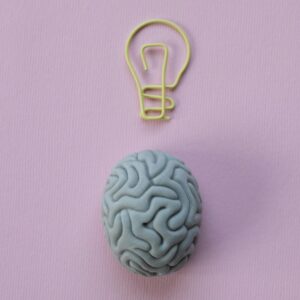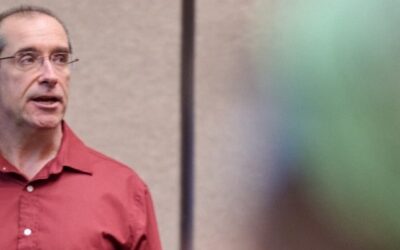What if I told you one brain region is responsible for all your success? Then a reasonable response would be, “what is your definition of success?”
Success, to me, is being who you want to be – fulfilling your purpose in life. Purpose isn’t limited to professional development; it also involves becoming the friend, partner and parent you aspire to be. Now, what if I told you that one part of your brain is largely responsible for achieving that purpose in life and achieving the goals you have set? The dorsolateral prefrontal cortex (DLPFC) is one of my favorite parts of the brain for its unique role in making us who we are while assisting us in striving to be who we want to be (1).
 First, the DLPFC is what allows us to conduct ourselves in society. This inhibitory action saves me from looking like a weirdo daily. It holds me back from belting out the plethora of songs in my head at any given moment, ranging from Celine Dion’s Titanic theme to Christmas Classics (yes, even in the middle of summer). But this part of the forebrain goes beyond making us more reserved in our behavior.
First, the DLPFC is what allows us to conduct ourselves in society. This inhibitory action saves me from looking like a weirdo daily. It holds me back from belting out the plethora of songs in my head at any given moment, ranging from Celine Dion’s Titanic theme to Christmas Classics (yes, even in the middle of summer). But this part of the forebrain goes beyond making us more reserved in our behavior.
The DLPFC also suppresses our limbic system (2). The limbic system, composed of areas of the brain like the amygdala, anterior cingulate cortex and hippocampus, is a more primitive part of the brain where we process emotions like fear, anger and anxiety. The limbic system served a greater use to humans when we were – just that – more primitive (3). But nowadays, the limbic system can be burdensome in trivial situations, with faulty overactivity in this area implicated in disorders like anxiety, PTSD, or a completely irrational fear of cicadas (4). Essentially, a good DLPFC prevents us from being slaves to our emotions.
If you’re a chiropractic or naturopathic student reading this, you should give your DLPFC some props for getting you to this point. This CEO of the brain enables us to anticipate future events, weigh options, and make informed decisions (5). Without it, we wouldn’t be able to forego the immediate pleasures of today to achieve the greater rewards of tomorrow (6). As a result, we feel good about this goal-directed behavior through the DLPFC’s integration of dopaminergic pathways (specifically from the ventral tegmental area and substantia nigra of the midbrain) (7). Nothing worth striving for would be accomplished without the DLPFC, so this is a part of my brain I am grateful for every day as I grind through my DC program.
At this point, you may be thinking, “where do I get one of those nice, functional dorsolateral prefrontal cortexes you are speaking so highly about?” And to that, I answer from a functional neurology perspective: to get a more functional DLPFC, we need to use and challenge our DLPFC, working it out like a muscle (8). A classic way to both test and exercise this part of the brain is to have somebody practice anti-saccades. Basically, you will hold up two fingers in front of somebody and have them look at the finger opposite of the one that you wiggle, inhibiting the urge to look in the direction of movement (which would be a normal, reflexogenic saccade) (9). Another way we can test/exercise the whole prefrontal cortex part is through a Stroop task, which involves naming the color of the ink the word is printed in rather than reading the word itself, thereby challenging our cognitive control, attention, and task switching (10).
As we journey through life, it is our DLPFC that guides us in making wise decisions, helps us control our impulses, and enables us to focus on long-term achievements over short-term gratifications (11). This part of our brain is crucial in managing our thoughts and actions in a way that aligns with our true selves and aspirations. So next time you’re setting a goal, facing a challenge, or simply trying to be a better person, take a moment to appreciate the incredible role of the dorsolateral prefrontal cortex in carrying this out. It’s not just a part of our brain; it’s the foundation of our capacity to grow, evolve, and reach our fullest potential (12).
Learn more about NUHS’ chiropractic program here.
References:
- Koenigs, M., & Grafman, J. (2009). The functional neuroanatomy of depression: Distinct roles for ventromedial and dorsolateral prefrontal cortex. Behavioural Brain Research, 201(2), 239-243.
- Arnsten, A. F. T. (2015). Stress weakens prefrontal networks: Molecular insults to higher cognition. Nature Neuroscience, 18(10), 1376-1385.
- Rolls, E. T. (2019). The cingulate cortex and limbic systems for emotion, action, and memory. Brain Structure and Function, 224(9), 3001-3018.
- Shin, L. M., & Liberzon, I. (2020). The neurocircuitry of fear, stress, and anxiety disorders. Neuropsychopharmacology, 45(1), 169-191.
- Miller, E. K., & Cohen, J. D. (2001). An integrative theory of prefrontal cortex function. Annual Review of Neuroscience, 24, 167-202.
- Heatherton, T. F., & Wagner, D. D. (2011). Cognitive neuroscience of self-regulation failure. Trends in Cognitive Sciences, 15(3), 132-139.
- Seamans, J. K., & Yang, C. R. (2004). The principal features and mechanisms of dopamine modulation in the prefrontal cortex. Progress in Neurobiology, 74(1), 1-58.
- Diamond, A. (2013). Executive functions. Annual Review of Psychology, 64, 135-168.
- Hutton, S. B., & Ettinger, U. (2006). The antisaccade task as a research tool in psychopathology: A critical review. Psychophysiology, 43(3), 302-313.
- MacLeod, C. M. (2019). Half a century of research on the Stroop effect: An integrative review. Psychological Bulletin, 109(2), 163-203.
- Hofmann, W., Schmeichel, B. J., & Baddeley, A. D. (2012). Executive functions and self-regulation. Trends in Cognitive Sciences, 16(3), 174-180.
- Pessoa, L. (2013). On the relationship between emotion and cognition. Nature Reviews Neuroscience, 14(3), 148-158.




0 Comments